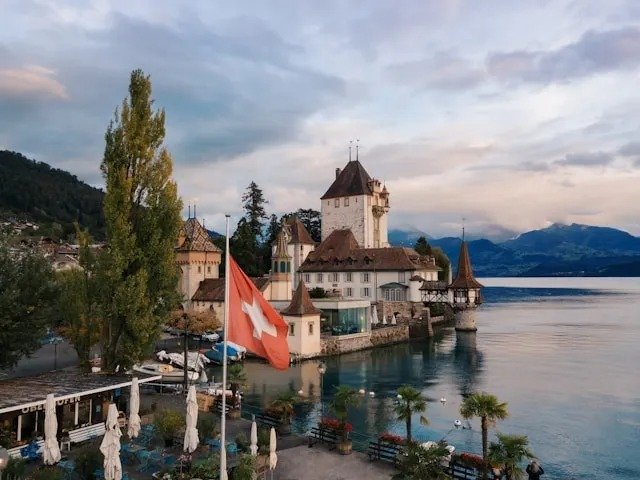When most people think of Switzerland, they imagine picture-perfect mountains, luxury watches, and world-class chocolates. But beyond those global icons lies a Switzerland that few truly know — a country that celebrates its soul through language, music, food, and centuries-old traditions.
From the rhythmic cowbell festivals in Appenzell to the colorful carnival streets of Basel, each region tells a story written in its own language. Traveling across Switzerland feels like crossing four different countries, yet everywhere you go, one spirit binds it all — unity through diversity.
Festivals as a Window Into Swiss Identity
My first real glimpse of Swiss life came during Fasnacht, the pre-Lent carnival in Basel. As I wandered through the streets, masked drummers and flute players filled the air with sound and laughter. But what fascinated me most wasn’t just the spectacle — it was the communication.
In Basel, the announcements and songs were in Swiss German, while just a few hours away in Geneva, festival posters and banners were in French. The shift was instant but seamless, reflecting how deeply language defines regional culture here.
It reminded me that in Switzerland, language is more than words — it’s identity. To understand why and how these languages coexist so beautifully.
The Language of Celebration
Each canton has its own festivals, and often, its own dialect. In the Italian-speaking canton of Ticino, locals celebrate Rabadan one of Switzerland’s oldest carnivals — where laughter and music spill through the narrow streets of Bellinzona. The joy here feels distinctly southern, full of warmth and melody, much like the Italian language itself.
Far north in Appenzell, the Alpabfahrt (cattle descent) marks the end of summer. Farmers guide their beautifully decorated cows down the mountains while villagers yodel greetings — a sound that echoes the rhythm of Swiss German speech.
Then there’s Fête de l’Escalade in Geneva, celebrated entirely in French, where people commemorate the city’s defense in 1602 by sharing chocolate cauldrons filled with marzipan vegetables — a sweet symbol of unity.
Across all these celebrations, one truth becomes clear: Switzerland’s festivals are multilingual mirrors of its people.
A Celebration of Diversity
Switzerland’s multilingual nature is no accident — it’s the result of centuries of cultural coexistence. The country officially recognizes four national languages: German, French, Italian, and Romansh.
While German is the most widely spoken, each language represents a distinct region and cultural flavor. Romansh, for instance, is used mainly in Graubünden, where mountain communities proudly keep it alive despite its small number of speakers.
This diversity could easily have divided the country, but instead, it strengthens its unity. To see how this harmony was built and maintained, explore the history.
When Language Becomes Art
One of my favorite experiences was attending a folk music event in Lucerne. The performers sang in different dialects, switching effortlessly between High German, Swiss German, and even snippets of French.
It wasn’t just a performance — it was a conversation between cultures. Language here becomes an art form, blending rhythm and meaning.
Similarly, at the Montreux Jazz Festival, one of the world’s most famous cultural events, artists and visitors from every linguistic background come together under one banner — music. Conversations in German, French, English, and Italian fill the lakeside air, reminding everyone that expression doesn’t need boundaries.
The Sustainable Spirit Behind Swiss Culture
What impressed me deeply during my travels was how sustainability connects to culture. Festivals are organized responsibly, with minimal waste and a strong emphasis on local products.
In rural regions, costumes and decorations are hand-crafted by artisans, often passed down through generations. Farmers use eco-friendly methods to maintain the landscapes that form the backdrop of these celebrations.
This harmony between modern values and ancient traditions is a hallmark of Swiss life. It’s not just about preserving nature — it’s about preserving identity.
How Language Strengthens Community Bonds
During Sechseläuten in Zurich, locals gather to burn the symbolic snowman (Böögg), marking the end of winter. While the event seems lighthearted, it reflects something deeper — a community tied by both language and ritual.
When the fireworks go off and people cheer in Swiss German, you realize that language here isn’t simply spoken; it’s lived. It defines belonging.
The same can be felt in smaller towns like Sion or Lugano, where language subtly influences architecture, cuisine, and even the pace of life.
Want to explore how each canton’s language shapes its traditions? You’ll love this deep dive into the topic: Swiss national languages
A Tapestry of Voices
Perhaps what makes Switzerland truly special is not just that it has four national languages, but that they all coexist without hierarchy. In a world often divided by linguistic barriers, Switzerland’s model shows that diversity can be harmony.
Standing in a festival crowd, hearing cheers in multiple languages, you realize that Switzerland doesn’t just speak — it sings.
Each word, each song, each tradition contributes to one unified identity: Swiss.
Final Thoughts: The Language of Celebration
As I watched the lanterns float into the night sky during Zurich’s Klausjagen festival, I felt something profound — every sound, every smile, every language carried the same message: joy.
Switzerland’s festivals aren’t just about music or parades; they’re about connection. And behind every drumbeat, every cheer, every shared meal lies the heartbeat of a multilingual nation.
For travelers seeking the true essence of Switzerland — not just its mountains or luxury, but its voice — the answer lies in its people, their languages, and their celebrations.







